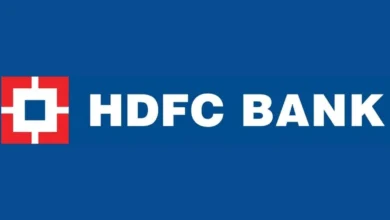Beyond FAANG Investments: MOAT Stocks Provide Equally Good Return Opportunities
The discussion of tech investments has long been dominated by FAANG stock (Facebook, Apple, Amazon, Netflix, and Google). It's crucial to remember that there is another class of equities known as MOAT stock.

The discussion of tech investments has long been dominated by FAANG stocks (Facebook, Apple, Amazon, Netflix, and Google). It’s crucial to remember that there is another class of equities known as MOAT stocks. MOAT, which stands for “wide economic moat,” is a term popular investor Warren Buffett used to characterize businesses with significant competitive advantages. The investing possibilities and excellent return potential of MOAT stocks are examined in this article.

Understanding the Economic Moat:
A sustained competitive advantage that enables a business to hold onto its market share and profitability for an extended period of time is known as a “economic moat.” Brand recognition, patents, prohibitive switching costs, scale economies, and network effects are just a few examples of the many variables that might lead to this advantage. As long as MOAT stocks have one or more of these advantages, they are able to outperform the market and produce steady returns while also being resistant to threats from rivals.
Companies with a competitive edge or a significant economic moat are referred to be MOAT stocks because they can sustain their market leadership and provide long-term, sustainable gains. It’s true that there are other investment alternatives outside FAANG that can offer just as high return chances, despite the fact that FAANG stocks (Facebook, Apple, Amazon, Netflix, and Google) have become popular investment choices in recent years owing to their great growth and market performance.

Characteristics of MOAT Stocks:
- Strong Branding: Businesses with well-known and recognisable brands frequently have a devoted client base and pricing power, which allows them to continue to dominate the market.
- Patents and intellectual property: Companies with patents or unique technologies have a distinct edge because they can safeguard their ideas, limit rivalry, and ensure long-term prosperity.
- High Switching fees: Businesses can keep a consistent client base and pricing power when customers must overcome considerable obstacles or fees to move to an alternative good or service.
- Economies of Scale: Organisations that are successful in achieving economies of scale can reduce manufacturing costs, increase productivity, and gain a competitive advantage over rivals.
- Network Effects: Companies that take use of network effects, in which the value of a good or service rises with the number of customers, can erect formidable barriers to entry for rivals.
Return Potential of MOAT Stocks:
Over the long run, MOAT stocks have the potential to produce enticing returns because of their enduring competitive advantages. While they might not develop as quickly as certain high-risk tech businesses, their steadiness and capacity for steady earnings can provide investors with respectable returns and capital growth.
Purchasing MOAT stocks might be a different approach to portfolio diversification with the potential for substantial profits. Strong brand awareness, high entry hurdles, superior technology or infrastructure, and large economies of scale are frequently characteristics of these stocks. These competitive advantages enable MOAT firms to outlast rivals, safeguard their market share, and produce steady profits.

Example of MOAT Stocks
- Coca-Cola (KO): Coca-Cola has a wide distribution network and a well-known brand, which add to its moat. The corporation has managed to maintain a leading position in the global beverage sector thanks to its variety of well-known beverages and flexibility in responding to shifting customer tastes.

- Johnson & Johnson (JNJ): As a healthcare multinational, Johnson & Johnson benefits from a broad range of product offerings, high brand value, and ample research and development resources. It has a competitive edge thanks to the broad selection of medicines, medical equipment, and consumer healthcare items it offers.
- Visa Inc. (V): Visa works in the payment processing sector and reaps the rewards of its extensive global network of retailers and customers. Significant obstacles for future rivals are created by its technical infrastructure, brand familiarity, and secure payment systems.

- Procter & Gamble (PG): A global manufacturer of consumer products, Procter & Gamble has a wide range of well-known brands in its portfolio. Its wide distribution network, robust brand recognition, and constant product innovation all add to its competitive advantage.
- Microsoft Corporation (MSFT): Microsoft has a substantial economic moat because to its dominance in the software sector, notably with its operating system and productivity tools. Its huge client base, cloud computing capabilities, and continued expenditures in R&D strengthen its position in the industry.
:format(jpg)/f.elconfidencial.com%2Foriginal%2F40b%2Ff2a%2Fa8c%2F40bf2aa8c8ec4753c05e57c375c72dc7.jpg)
These are just a handful of the MOAT stocks that are accessible in various sectors; there are many more. When thinking about investments, it’s crucial to do your homework, analyses the company’s fundamentals, examine its position in the market, and determine its development potential. It may be possible to maximize return chances while minimizing risk by diversifying your portfolio with a mix of FAANG and MOAT stocks. This will provide you a balanced exposure to various industries
In conclusion, even though FAANG stocks have attracted a lot of interest and generated spectacular returns, it is important to think about alternative investing prospects outside of this group. Companies with a competitive edge or economic moat, or MOAT stocks, might provide similarly alluring return potential. These businesses have qualities that allow them to retain market dominance and provide long-term profitability, such as strong brand recognition, high entry barriers, superior technology or infrastructure, and economies of scale.
Despite the undeniable success of FAANG stocks, investors should diversify their portfolios and look at alternative investing options. With their substantial economic buffers and significant competitive advantages, MOAT stocks provide appealing investment opportunities. Because of their track records of resiliency and profitability, these businesses are a good choice for investors looking for steady returns and long-term development. Investors may build a balanced portfolio with a good mix of stability and growth potential by combining FAANG and MOAT companies.
Coca-Cola, Johnson & Johnson, Visa, Berkshire Hathaway, and Procter & Gamble are a few examples of MOAT stocks. You can possibly gain from a balanced exposure to several sectors and boost your chances of generating favorable returns while controlling risk by diversifying your portfolio to include both FAANG and MOAT equities. Making educated investing decisions is important for every investment, as it is with any investment.




